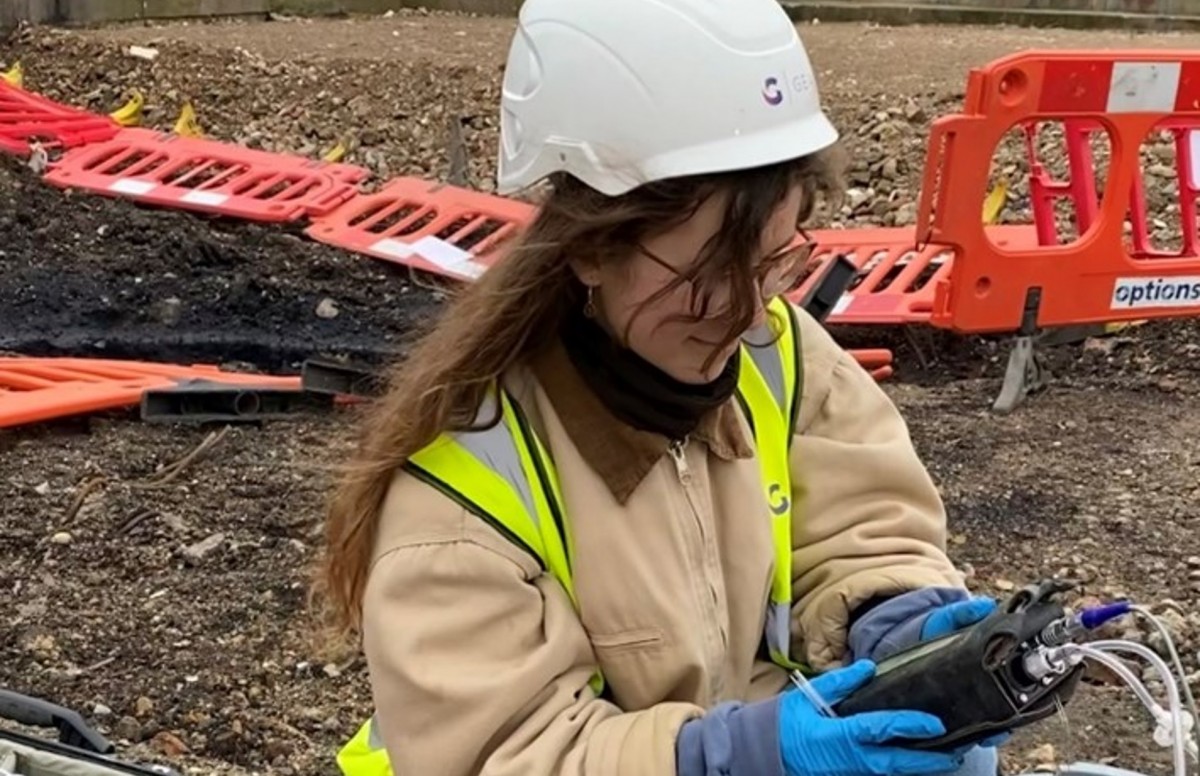Geotheta Things To Know Before You Get This
Wiki Article
The Greatest Guide To Geotheta
Table of ContentsThe Best Strategy To Use For GeothetaThe Buzz on GeothetaNot known Details About Geotheta How Geotheta can Save You Time, Stress, and Money.Geotheta for Beginners

They perform site investigations, accumulate examples, carry out laboratory examinations, and analyze information to review the viability of the ground for building projects - Tailings Engineer. Based on their findings, geotechnical engineers give referrals for structure style, incline security, maintaining frameworks, and mitigation of geotechnical dangers. They team up with other specialists, such as designers, architectural engineers, and construction teams, to make certain that geotechnical factors to consider are integrated into the overall job style and execution
By assessing the behavior and homes of dirt and rock, they can determine possible geotechnical hazards such as landslides, soil negotiation, or incline instability. Their know-how aids protect against failings or accidents that might endanger lives and residential or commercial property. Right here are some comprehensive responsibilities and responsibilities of a geotechnical engineer: Website Examination: Geotechnical engineers conduct site investigations to gather information on subsurface problems.
They analyze the data to recognize the buildings and actions of the soil and rock, including their toughness, leaks in the structure, compaction features, and groundwater problems. Geotechnical Analysis and Layout: Geotechnical designers examine the information accumulated during website investigations to assess the stability and viability of the website for building and construction tasks. They do geotechnical calculations and modeling to assess factors such as bearing capacity, negotiation, incline stability, lateral planet pressures, and groundwater circulation.
Getting The Geotheta To Work
Structure Style: Geotechnical designers play a vital function in designing foundations that can safely support the intended structure. They examine the soil conditions and lots requirements to determine the appropriate foundation type, such as shallow structures (e.g., footings), deep structures (e.g (https://packersmovers.activeboard.com/t67151553/how-to-connect-canon-mg3620-printer-to-computer/?ts=1722609175&direction=prev&page=last#lastPostAnchor)., heaps), or specialized methods like dirt enhancement. They take into consideration factors such as settlement limitations, bearing ability, and soil-structure communication to establish optimum structure layoutsThey review building and construction plans, screen site activities, and conduct area inspections to confirm that the style recommendations are adhered to. If unforeseen geotechnical problems arise, they examine the circumstance and offer recommendations for remediation or modifications to the layout. Danger Evaluation and Reduction: Geotechnical designers analyze geotechnical risks and threats associated with the job website, such as landslides, liquefaction, or dirt disintegration.

Collaboration and Communication: Geotechnical engineers function very closely with other professionals associated with a project, such as engineers, architectural designers, and building and construction groups. Reliable communication and partnership are important to incorporate geotechnical considerations right into the overall job design and building procedure. Geotechnical engineers give technological expertise, answer inquiries, and make certain that geotechnical demands are met.
The Facts About Geotheta Revealed
Here are some types of geotechnical engineers: Structure Engineer: Structure designers focus on making and analyzing structures for frameworks. They examine the soil conditions, load needs, and website features to identify the most appropriate foundation kind and layout, such as superficial foundations, deep structures, or specialized methods like heap foundations.They evaluate the variables affecting incline stability, such as dirt buildings, groundwater problems, and slope geometry, and create strategies to stop slope failures and minimize dangers. Earthquake Engineer: Quake designers concentrate on analyzing and creating structures to withstand seismic pressures. They analyze the seismic hazard of a website, review soil liquefaction capacity, and create seismic style requirements to ensure the safety and durability of structures throughout earthquakes.
They execute area screening, accumulate samples, and evaluate the gathered information to define the dirt residential properties, geologic formations, and groundwater problems at a website. Geotechnical Instrumentation Engineer: Geotechnical instrumentation designers concentrate on tracking and determining the actions of dirt, rock, and frameworks. They mount and preserve instrumentation systems that keep track of factors such as soil settlement, groundwater levels, slope motions, and architectural displacements to examine performance and supply very early warnings of prospective problems.
How Geotheta can Save You Time, Stress, and Money.
They perform examinations such as triaxial tests, debt consolidation examinations, direct shear examinations, and permeability examinations to collect data for geotechnical analysis and style. Geosynthetics Engineer: Geosynthetics designers specialize in the design and application of geosynthetic materials, such as geotextiles, geogrids, and geomembranes. They use these products to boost soil security, strengthen slopes, give drain options, and control disintegration.They have a tendency to be investigative people, which implies they're intellectual, introspective, and curious. They are interested, methodical, reasonable, logical, and sensible. Some of them are also social, meaning they're kind, generous, cooperative, person, caring, helpful, empathetic, skillful, and pleasant - Consulting Engineer.
In the office setting, geotechnical engineers make use of specialized software devices to carry out estimations, create designs, and evaluate data. They prepare records, review project specifications, interact with clients and group members, and coordinate task activities. The office setup supplies a helpful environment for study, analysis, and partnership with various other professionals included in the project.
8 Simple Techniques For Geotheta
They regularly check out task sites to conduct site examinations, evaluate geotechnical conditions, and collect information for analysis. These gos to entail taking a trip to various locations, occasionally in remote or challenging surfaces. Geotechnical designers may do dirt sampling, conduct tests, and screen building and construction tasks to make sure that the geotechnical facets of the task are being executed navigate to this website appropriately.Geotechnical engineers additionally function in specialized geotechnical laboratories. Geotechnical lab engineers function thoroughly in these settings, taking care of screening devices, running instruments, and videotaping information.
Report this wiki page